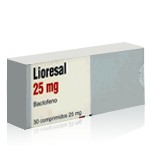Muscle Spasticity: Understanding, Managing, and Treating an Overlooked Condition


Muscle spasticity is a complex and often misunderstood neurological symptom that significantly affects the quality of life for millions of people with certain medical conditions. It’s a term that encapsulates a broad range of motor control challenges due to abnormal muscle tone. For patients and caregivers, understanding spasticity is the first step toward managing its impact effectively.
What Is Muscle Spasticity?
Muscle spasticity refers to an abnormal increase in muscle tone or stiffness, which can interfere with movement, speech, or cause discomfort and pain. This condition results from damage to the central nervous system—either the brain or the spinal cord—that disrupts the pathways responsible for muscle coordination.
Spasticity is not a disease in itself but a symptom of underlying neurological disorders. It is commonly seen in individuals with conditions like cerebral palsy, multiple sclerosis, stroke, spinal cord injury, and traumatic brain injury. The symptoms range from mild muscle stiffness to severe, uncontrollable muscle spasms that can be painful and debilitating.
Types of Spasticity
Spasticity can present in various forms depending on the severity and location of the neurological damage. While classifications may differ slightly among clinicians, the condition is often discussed in terms of its distribution and the underlying cause.
Focal spasticity affects specific muscle groups, usually in a localized area such as the arm or leg. This type is more manageable and often responds well to targeted treatments like botulinum toxin injections or physical therapy.
Generalized spasticity involves multiple muscle groups and typically affects larger areas of the body. It is more common in advanced neurological disorders and may require systemic medications for control.
Spasticity can also be classified based on tone characteristics — phasic (sudden, reflexive muscle contraction) or tonic (persistent increase in muscle tone) — both of which may co-exist in one patient.
Mechanism of Spasticity
To understand the mechanism behind spasticity, it's essential to grasp how normal muscle movement occurs. Under normal conditions, the brain sends signals through the spinal cord to the muscles, instructing them to contract or relax as needed. This process is tightly regulated by inhibitory and excitatory signals that keep muscle tone balanced.
When the central nervous system is damaged, especially in areas responsible for motor control, the balance of these signals is disrupted. Specifically, there is a loss of inhibitory signals that usually prevent muscles from contracting excessively. As a result, the muscles become overactive and respond abnormally to stimulation. Even minor triggers, such as touch or movement, can cause exaggerated muscle contractions or spasms.
Additionally, spasticity involves changes in the muscle fibers themselves, which may become shorter and less elastic over time due to prolonged contraction. This contributes to joint stiffness, reduced range of motion, and contractures in severe cases.
Factors That Increase Spasticity
Several factors can exacerbate muscle spasticity, often temporarily. These include:
- Infections, particularly urinary tract infections or respiratory illnesses, can heighten the excitability of the nervous system and worsen spasticity.
- Fatigue and stress influence the body’s response mechanisms and can make symptoms more pronounced.
- Sudden temperature changes, especially cold, can trigger spastic reflexes.
- Skin irritation from pressure sores or tight clothing may act as external stimuli, increasing muscle tone.
- Poor posture or prolonged immobility can lead to increased stiffness and spasticity due to lack of joint and muscle movement.
Recognizing and minimizing these triggers is crucial in the holistic management of spasticity, particularly in chronic conditions.
Releasing Muscle Spasticity
Managing and reducing muscle spasticity involves both short-term relief and long-term strategies to improve muscle function and quality of life. Approaches vary depending on the severity and underlying cause.
Physical therapy is foundational. Stretching exercises help maintain muscle length and joint flexibility, reducing the risk of contractures. Strengthening exercises can improve overall motor function and balance muscle tone across affected and unaffected areas.
Occupational therapy helps individuals adapt daily activities to accommodate limitations caused by spasticity. It may involve the use of splints, braces, or mobility aids.
Medications are commonly used to reduce muscle tone. These include oral antispastic agents, injectable neurotoxins like botulinum toxin, and intrathecal therapies. Some patients may benefit from nerve blocks or surgical interventions in severe cases.
Positioning and orthotic support can also play a role. Proper body alignment during sitting or lying down helps reduce undue pressure on specific muscles and joints.
For sudden spasms, heat therapy, gentle massage, and slow stretching are often effective in releasing the immediate tightness.
Spasticity vs. Flaccidity: Understanding the Difference
Spasticity and flaccidity represent opposite ends of the muscle tone spectrum and are both results of neurological dysfunction, though they manifest very differently.
Spasticity is characterized by increased muscle tone, stiffness, and exaggerated reflexes. It often leads to joint rigidity and involuntary muscle spasms.
In contrast, flaccidity (also known as hypotonia) involves a complete loss or severe reduction of muscle tone. Affected muscles are soft, weak, and cannot sustain normal posture or resistance against gravity. Flaccidity is common immediately after a stroke or spinal cord injury and may evolve into spasticity as the nervous system adapts.
The transition from flaccidity to spasticity can provide valuable clinical insights into the progression of neurological recovery or deterioration. Treatments for each condition are distinctly different, making accurate diagnosis critical.
The Role of Lioresal in Treating Muscle Spasticity
Lioresal, the brand name for baclofen, is one of the most widely used medications for treating spasticity. It acts on the central nervous system by stimulating GABA-B receptors, which inhibit excitatory neurotransmitter release and reduce muscle tone.
Baclofen can be administered orally or intrathecally (directly into the spinal fluid via a pump for more severe cases). Oral baclofen is generally used for mild to moderate spasticity, while intrathecal baclofen is reserved for individuals with severe spasticity that does not respond to oral therapy or causes intolerable side effects.
One of the major benefits of Lioresal is its ability to reduce muscle tone without completely paralyzing muscles, allowing for more natural movement and functional improvement. It is particularly effective for patients with multiple sclerosis, spinal cord injury, or cerebral palsy.
However, like all medications, Lioresal comes with potential side effects. These include drowsiness, dizziness, weakness, and, in high doses, respiratory depression. It should be tapered off gradually to prevent withdrawal symptoms.
Close monitoring by a healthcare provider is necessary to optimize dosage and evaluate treatment response. In patients with implanted baclofen pumps, regular assessments are required to ensure the pump is functioning correctly and delivering the appropriate dosage.
Final Thoughts
Muscle spasticity is a challenging yet manageable condition when approached with a comprehensive and individualized plan. Understanding the types, mechanisms, and triggers of spasticity allows patients, caregivers, and healthcare providers to work collaboratively toward minimizing its impact.
From physical therapy and lifestyle modifications to advanced medical treatments like Lioresal, there is a wide range of strategies available to improve muscle function and enhance quality of life. Early intervention and ongoing support are crucial for achieving the best possible outcomes.
Medically Reviewed by Dr. Faride Ramos, MD
(Updated at Apr 10 / 2025)

